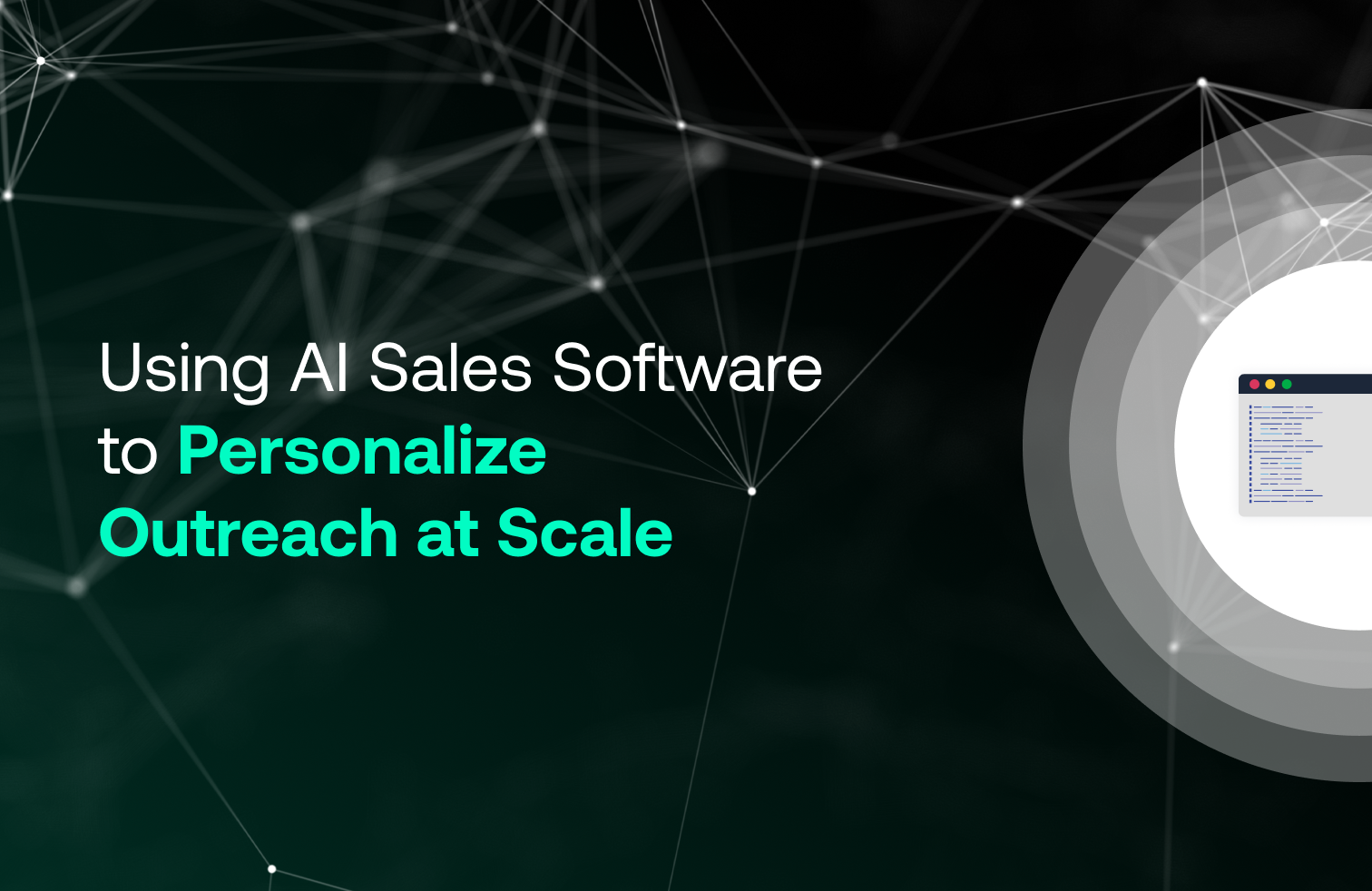Buyers now expect more than a generic email when you are checking in. They respond to messages that show you know them, like their role, their goals, and even the timing of their needs. The trouble? Personalization takes time, and time is the one thing most sales teams lack.
That’s why in this post, we will talk about how AI can help you keep your outreach warm and tailored, even when you’re reaching out to hundreds of leads. We’ll talk about the data you can use, how to shape messages, and the tools that make this scale possible without drowning you in extra work.
Why Personalization at Scale Pays Off
Personalized outreach isn’t just a nice touch but a way to reach more deals with less waste. Buyers are bombarded with messages daily, and most of them sound the same. When your note lands in their inbox and speaks to their current need, you stand out.
Relevant emails have far higher open and reply rates. A quick context line, like a reference to their latest product launch or a shared contact, can pull a reader in. The payoff is more than just clicks; it’s the trust you build from the first touch. Over time, that trust means faster deal cycles and more closed business.
What AI Sales Tools Actually Bring
AI sales software tools don’t just store contacts; they act like smart assistants that read the signals your prospects send. They can scan call notes, emails, site visits, and even webinar chats, then match those details to the right contact or deal.
With the right setup, these tools assign scores to leads based on actions they take. A quick reply to your proposal? That score goes up. A long gap with no interaction? That score may drop. This means you spend more time on the leads that are likely to move forward and less time guessing.
Some tools can even create subject line options or suggest first-line personalization that fits the lead’s recent activity. Momentum, for example, blends data from calls, emails, and other touchpoints into one view that flows into your CRM and Slack. You don’t need to pull reports from five places; insights are right where you work.
Signals & Data Sources That Power Personalization
Your outreach is only as strong as the signals behind it. High-value signals can come from many places. Did the lead just click a pricing page? That’s worth a timely email. Did they attend your webinar but skip the Q&A? That’s a chance to follow up with a resource.
Conversation notes are another goldmine. AI can flag mentions of budget, timeline, or key pain points in past calls. This gives you the context to send a message that fits their current stage.
You don’t need every data point under the sun. Start with three to five signals you can trust. Once you see results, you can add more sources and refine your scoring.
Building Templates that Feel Human
A good template doesn’t read like a script. It’s more like a frame you can fill in with the right pieces. The structure needs to be simple; you can include a greeting, context, value, and call-to-action. You can swap each part based on the lead’s data.
For example, your context line might mention a recent product launch. Your value line could point to how your tool helps with that type of release. The CTA should be short and clear when you are asking for a quick chat or sharing a short demo.
Sequencing, Timing, and Multi-Channel
Outreach isn’t like you have done it once and it’s over; it’s a sequence. AI can help you plan these steps so you stay in touch without flooding the lead. You can start with an email, and then you can follow up on LinkedIn, and at last, you can set a reminder for a call.
AI also learns when your prospects are most likely to reply. If your target often answers emails in the morning, the tool can schedule sends to match. Over time, this improves both reply rates and meeting bookings.
What to Track and How to Read It
If you want to get better at outreach, you need to track more than just opens. Start with the reply rates, meetings that you have booked, and how fast leads move from first touch to sales-qualified.
Run simple tests to see the lift from personalization. For example, you can send half of your leads a custom sequence and send the other half a generic one. Later, you can compare the results to see how much impact your changes have.
Conclusion
Personalization is very much possible with smart data use and the right process. You can keep each message relevant while reaching far more prospects than before.
AI sales software tools make this possible by cutting the manual steps that slow you down. Over time, these tools will get even better at spotting the right moment and message for each lead. The teams that blend clear outreach playbooks with the speed of AI will win more meetings and waste far less effort doing it.
FAQs
1. Will AI make my outreach sound robotic?
Not if you guide it with good templates and tweak the final output. AI should speed up your work, not replace your voice.
2. Which signals matter most for personalization?
Start with recent actions like site visits, event sign-ups, and email replies. Then add account-level data for more context.
3. How fast will I see results?
Small pilot tests can show better reply rates in as little as two weeks. Keep tracking and adjusting for stronger gains.
4. Do I need a data expert to run these tools?
No. Most modern platforms come ready to use and let you set rules without coding skills.
5. How do I stay compliant with outreach rules?
Use data that’s been shared with consent, avoid sensitive topics, and keep a record of opt-outs.




.svg)

